As human beings distance away from each other to deny the corona virus any additional mass and volume, the left-wing insurgents in India's dense jungles converge into south Bastar in central India from neighbouring provinces as well as from Nepal1:
"The Maoists (as the left-wing extremists in India are known in common parlance) are organising villagers for confronting the government on the issue of fixing the minimum price for plucking up of tendu leaves and compensation for death or injury of villagers involved in plucking of the leaves"2
Mumbai based advocate Anindya Roy found the otherwise insurgent affected roads of the central Indian province of Chhattisgarh 'empty and pitch dark' as he rode towards Kolkata in this part of the COVID stricken world to carry out the last rites of his father, who died of cardiac arrest.3 The Left-wing insurgents possibly had quarantined themselves in their guerrilla base in Chhattisgarh.
Lugubrious as it may sound, human beings would live, die, come and go - mostly as passers-by and for moments as agents of history. In 2020, as we experience a historical period of combating the invisible enemy of humankind, fifty years down the line much would be forgotten - the pages of academic history, online or otherwise, would be left over mostly for the academically oriented or the enthusiasts.
Events end, pandemics cease, wars abate. Empires fall, kings perish, and people die. We learn, unlearn and forget. Ideas and ideologies however, by all means and purposes live longer. They too become non-existent, or prone to disuse. Even then, they tend to survive longer. Along with the idea, the ideologue is exalted to a lofty pedestal which confers him or her chimerical extravaganza, a time-ordered baroque-styled reverence and a permanent space in the pantheon of demi-gods in the socio-cultural realm.
Lenin was remembered, written, discussed, argued, beatified as well as execrated - all through the 20th century, for good or for worse; but the Spanish Flu was mostly forgotten - at least not assailed in the history textbooks at par with the First World War. Gandhi and his Satyagraha have been extolled, but even a trained historian would find it difficult to refer to publications citing the fact that Gandhi was anatomically affected by the killing flu4
.
People generally are loathe to singularly dealing with death. Pandemic is a pointer to that inevitable singularity. Ideology and wars at the other end - though may lead to millions of deaths - signify human accomplishments. Even brutality is an exhibition of power. Decades later, a chronicler may find more elation in analysing political history rather than the history of science. Discovery of a vaccine may be boring to be narrated vis-a-vis demolishing a nation-state by nuclear weapons, though ironically both reflect considerable scientific temper and human prowess.
"Today, as then, you'll be born of the people.
with bruised hands, with bits
of surviving soul, with clusters
of expressions that death did not extinguish,
with intractable tools
hidden beneath your tatters"
People are of paramount importance in guerrilla warfare. The better one understood this concept, the easier was it for the organisation to manage the insurgency.
Samuel Griffith (1940) mentions the pamphlet ‘Yu Chi Chan’ or Guerrilla Warfare, published by Mao Tse-tung and his collaborators in 1937. Mao, a passionate revolutionary, affirms that guerrilla operations are a necessary part in a war of revolutionary character, is also an unswerving pragmatist, and writes5:
"This warfare must be developed to an unprecedented degree and it must coordinate with the operations of our regular armies"
In the same treatise, Mao quotes Lenin:
"A people's insurrection and a people's revolution are not only natural but inevitable"
Mao stressed on violence and the 'primacy of the military', writes Julia Lovell6. 'Only with guns, can the whole world be transformed', wrote Mao; and this caught the imagination of neophyte revolutionaries across the world. Lovell is confident on this count as she asserts that '.....aspiring insurgents from California to Kolkata worshipped him as the military colossus of the revolution.'
Mao led a long life of close to eighty-three years. He passed away in September, 1976. Nonetheless, his thoughts, practices, sayings, sermons, craft have all been canonised as Maoism – the additional plank of Marxism-Leninism – the new exemplar of proletariat revolution which ultimately led to the apotheosis of Mao Tse-tung as a demi-god in the same pedestal of Karl Marx and Vladimir Lenin.
'The fact is that Mao, at the time of his conversion to Marxism, knew very little about Marxism. He had apparently read some or all of the Communist Manifesto but little else', write Gregor and Chang.7 This may be a bit too harsh criticism through the puritanical prism and more so when Mao at that point of time could read only Chinese and the Manifesto along with Kautsky's 'Class Struggle' were the only Marxist manuscripts available to him; yet the observation may not be discarded in its entirety.
Gregor and Chang further bring out an interesting aspect of Mao's political thought. Mao's intellectual firmament contained the colours of popular Chinese novels - especially that of Shui-huChuan, probably written by Shih Nai-an in the 14th century. It was a fictionalised account of an actual rebellion that took place during the Northern Sung dynasty of the 12th century. The protagonist of the novel had taken up arms, along with other rebels, in the defence of the people. The authors opine that Mao had 'identified the rebellion in the novel as the uprising of the peasant classes of old China'.
Mao's belief in the revolutionary potential to be residing in the consciousness of the Chinese peasants, or for that matter, peasantry on the whole, is the biggest theoretical deviation from the Marxian analysis of treating the industrial proletariat as the vanguard of the revolution. Marx did not consider the peasantry to be devoid of everything - it after all possessed 'land' - howsoever small holdings, yet a private property good enough for it to be deterred to lead a revolution against the bourgeoisie and the reactionary.
An autodidact peasant, as Julia Lovell describes Mao, 'his power did not stem from his oratory'; rather from his actions, his series of battles against the Kuomintang, his leadership in the Long March and the energy, strategy and tactics imparted to the Chinese folks in the protracted people's war during the Japanese occupation, and greatly from the systematically documented essays which Lovell rightly terms 'disciplined pieces of work'.
Armed response is the generic pre-requisite for success in the Maoist paradigm. If 'revolution is not a dinner party' has turned into a banality, then of course Mao's 1937 one-liner 'historical experience is written in blood and iron' carries the message loud and clear.
The culture of armed response has been despised and somewhat unjustifiably conflated with the practice of bloodletting violence in the post-colonial period in the erstwhile colonies. Along this vector, Dilip Simeon, a former participant in the Naxalite movement, has been rather vitriolic in his analysis8:
"In 1912, a bomb thrown at Lord Minto in Delhi killed not the Viceroy, but an Indian attendant. On 9 October 1915, Deputy Superintendent of Police Jatindra Mohan Ghosh was sitting in his house in Mymensingh along with his family. Some youths came to the door and fired at him, killing him on the spot. His three year old son, whom he was holding, was also killed. In 1932, in an attack on the Pahartali European Railway Club in Chittagong, thirteen card-playing civilians were injured and an Anglo-Indian woman killed. The action was led by a school teacher, Pritilata Waddadar, who committed suicide. Waddadar was an associate of the legendary Surya Sen. She was hailed as an exemplary patriot, which indeed she was. So were Khudiram Bose and Prafulla Chaki. And so was Charu Mazumdar, the founder of what is known as Naxalism (later on, today’s Maoist insurgency).....................................
...........What do the cruel deaths of Miss and Mrs Pringle-Kennedy signify? Or the death of a three-year-old son of a policeman? Or of the millions killed since then? Does the invisibility of certain victims give them a silent status? Perhaps the significance lies in their consignment to nothingness within the radical imagination. Not only are they dead, but their death has no meaning. This indifference to life is the mark of the nihilism that has overtaken the revolutionary spirit"
The merger of violent revolutionary action whose sole purpose was to defeat imperial forces with that of the annihilation campaign of insurgency orchestrated by Charu Mazumdar et al in independent India might land onto erroneous analytical planes. Rationality demands that violence ought to be the last option. However, time and again, 'just wars' have been waged. If violence per se is denigrated, then what happens to revolutionary wars by oppressed people against autocracy and exploitation. Simeon, nonetheless, seems to opine on the contrary and further elaborates in his thesis as he writes:
Violence is the very grammar of exploitation and oppression related to class, caste, sex and race. It has always borne the tendency to break free of institutional constraints and become a force in itself. That is why bands of warriors are the most stable feature of class society.9
Charu Mazumdar remains an intriguing individual - at one extremity described by Simeon as 'a homicidal maniac' [p 353, Lovell] while at the other end, his fatherly figure manifests in the version depicted by his son Abhijit Mazumdar – as a well-read intellectual who was very fond of the arguably bourgeoisie literature of Agatha Christie. While an erstwhile police commissioner of Kolkata passes a snide remark at Charu Mazumdar as the 'worshiper of Kali, the goddess of death (in Bengal)', he is continued to be worshiped by thousands of his followers in India as "CM" who laid the framework for building the New Democratic state based on the pillars of Marxism-Leninism-Maoism.
CM is hailed by the present day Maoist insurgents in India as the torch bearer of the guerrilla warfare on the lines of Mao Tse-tung. It was he in the late 1960s who taught his disciples to think of capturing the cities by gradually zeroing inwards, sweeping through in the process, and the ring of villages encircling the cities. It was CM who encouraged the formation of small squads of about 8 to 10 recruits each, at the village level who would go for targeted attack (and if required, assassination - which for most of the times, would take place at the drop of a hat) of the local landed gentry. A plain look at his methodology suggests that CM by all means wished to ignite the cumulative anger of the debt-ridden, exploited rural proletariat of India and smoothly channelise it into anarchic violence - a process which he desired to term as 'revolution'.
Did Marx endorse of violence? Ernst Fischer has articulated in the nicest of ways10:
".....the older Marx remained faithful to the young Marx's view that violence is midwife to every society pregnant with a new one: but he never maintained that violence begets the new society...................in a letter to his friend Kugelmann in 1871, [Marx said] that it was essential for every real people's revolution on the continent to 'smash' the machinery of the state - while at the same time speaking of the possibility of a peaceful revolution in America, England and Holland."
Fischer concludes beautifully by quoting the maestro:
".....we shall proceed against you [the governments] by peaceful means where possible, and by force of arms if necessary."
Marx had talked about 'dictatorship of the proletariat'. How the dictatorship was to be established was not elucidated. It may safely be surmised that Marx neither eulogised violence nor abnegated it. To Marx, violence was an instrument of establishing the 'Raj of the exploited masses' - led by the industrial workers. If Marx was the venerated peer, then it is too simplistic to assume that his murids, Lenin and Mao, would abjure violence for no compelling reason.
Even in pre-Marxian days of the French Revolution, violence was an instrument to change the society and economy. Violence galloped to the boulevards of Paris in the avatar of the guillotine. Heads rolled, 50 to 60 on an average per day. In spite of that, French Revolution attracted great minds as well as leaders - then, later as well as now. Simon Bolivar, though critical of Napoleon, was enthused enough by the impact of the French Revolution to have carried it into the Americas. Though not in a rhetorical sense, but somewhat of an oxymoron was the 18th century Mysore's king Tipu sultan's membership of the Jacobin club - a monarch's deification of a radical group whose agenda was to bring down the French monarchy. Amidst the violence of 1857, rather fascinating was the submission of Muhammad Ali Khan on the last night of his life, told to a young Scot soldier, William Forbes Mitchell11:
"Although we have failed to wrest the country from the English, I hope we have done some good, and that our lives will not be sacrificed in vain as I have read French history as well as English."
Precisely one year before, in April 2019, the 14th volume of People's March, the infrequent (now banned) periodical of the Communist Party of India (Maoist) [CPI(M)] came out with a long-winded article on how to accomplish the New Democratic Revolution [NDR] in India. Apart from castigating the extant 'bourgeoisie' democratic structure, the article opined that "the only way for solving the people's problems is struggle and not elections."
The ideological plank would of course that be of Marxism-Leninism-Maoism established by the army of the people - in consonance with the people's liberation army of existing socialist-communist states.
The piece further asserted that "boycott of elections is a democratic right of the people and genuine elections take place only in the New Democratic society."
The interesting part of the essay, however, was the 'alternate revolutionary programme' (p 9, People’s March, Vol. 14, No 1, April 2019) placed forth by the Maoists. The theoretical premise of the insurgents envisions the 'worker-peasant alliance in the leadership of the proletariat'.
This vanguard alliance, according to the Maoists, 'shall take up continuous revolution in the cultural sector and unleash the New Democratic dictatorship on the exploitative classes and the imperialist agents.'
The framework of governance that was laid out in the post-revolution scenario was noteworthy. The major plans of actions could be spelt out as under:
- All lands would be seized from the landlords and religious organisations. Surplus lands would be distributed to the landless, poor and the agricultural farmers on the basis of the classical communist adage 'land to the tiller'.
- Interestingly, without any supra-condition, all government, cooperative and private loans would be waived off for the landless and poor farmers. The agrarian sector would thrive, based on cooperative agriculture.
- The New Democratic state would seize all capital, land, buildings and plantations and also nationalise all the factories, banks, insurance companies and research organisations. The new communist regime would 'disband the agreements with imperialist institutions like International Monetary Fund, World Bank and World Trade Organisation. The communists abhor and necessarily reject the 'imperialist sponsored [concepts of] liberalisation, privatization and globalisation’.
- A revolutionary proposal in the New Democratic communist regime is to 'recognise the right to work as a fundamental right'. Further, special economic zones are to be dissolved.
- Another startling aspect, though not inconsistent with the present Maoist paradigm, is that the fancied regime vows not to 'coerce' any nationality to be a part of the Indian federation. The 'new state' would possess enough largesse to grant the right to self-determination to all the nationalities. The 'new Indian federation' envisaged by the Maoists coalesces only on three parameters: defence, foreign affairs and currency. The Maoists talk about 'a voluntary federation based on democracy, mutual acceptance and cooperation'. Moreover, the New Democratic state won't 'impose any language on the nationalities' and as if to take a pot shot at the present Indian democratic structure, the framework says that 'in the name of national language', no coercion would be allowed.
- Interestingly, and again very much within the present Maoist discourse, the futuristic communist regime is in sync with the so-called 'bourgeoisie' Indian democracy (a vituperative term rampantly used by the Maoists to describe the parliamentary democracy) insofar as affirmative action toward the dalits and socially backward classes is concerned.
Nevertheless, in the context of women empowerment, the contemplated communist regime appears to be conservative as it despises and bans 'obscene literature that portrays women as commodity, obscene advertisements, and beauty contests.' One heartening aspect is that the regime promises to 'rehabilitate women trapped in prostitution and provide social security to them'. However, the regime is probably not progressive enough to discuss the cases in which women can pursue a profession in which they may voluntarily use their physicality for financial gain.
It is indeed noteworthy to observe that the Maoists plan to facilitate greater participation of women in social production and declare to free the women from the shackles of domestic bondage.
- Understandably, autonomy to the adivasis is guaranteed in the new state. Details however, are missing. The only description provided is rather nebulous and all encompassing – the new state 'recognises the collective ownership of the adivasis on Jal-Jangal-Zameen'.
- The religious policy of the perceived state is prima facie, contradictory. At one end, it 'opposes imposition of any particular religion and also all kinds of religious fundamentalism', but at the other end, it plans to 'implement special policies for the social and economic development of religious minorities'. The monograph affirms that the new regime would be against 'the utilisation of religion for political objectives', but by opening up the vista of 'special policies' for religious minorities would they be able to strictly dissociate from non-secularism is a matter of debate.
- It is rather intriguing that a communist state, which is by definition hierarchical and autocratic, guarantees freedom of speech, writing and that of press. Other democratic rights like right to strike, to demonstrate, to form organisation are being granted, at least as a matter of principle. These rights, however, appear to be more of a lip service.
- The New Democratic state claims to be a welfare state, which guarantees the right to employment, education and medicine as fundamental rights. In the present constitution of India, education has already been given the status of a fundamental right [Article 21A].
- On the expected lines, the communist regime charts to 'eradicate private firms that work for profit in providing drinking water, electricity, transport, communication and other services which affect the people at large. Nonetheless, what is fascinating is the attempt at 'gradually lessening the difference between mental and physical labour'.
- Extremely unclear in the proposed programme is the crucial aspect of a state - the judiciary. The document simply states that 'rational justice' would be guaranteed and the judicial policy would be accessible to all the people. But without any detailed road map for the judiciary, it is not at all understood what the judicial structure would be like and naturally evokes ominous anticipation about mobocracy or for that matter singular autocracy as reflections of an obscure judicial system.
- To protect the environment and prevent displacement of people, the Maoists propose to even ban (if needed) big river-valley projects and cutting of forests. However, there is a catch. The New Democratic state may take up 'development projects' by seeking the opinion of the people. The Maoists are pragmatic to affirm that they would go ahead with the project if proper rehabilitation and employment of the potentially displaced people are taken care of. In this context, it is hard to bring out the difference in approach to be adopted by the Maoist New Democratic government vis-a-vis the so-called comprador-bourgeoisie democracy of India at present - as the latter too takes care of rehabilitation and just compensation of the people who are supposedly displaced in any major development project.
- The most amusing aspect of the planned Communist regime are the principles of its foreign policy: mutual respect for integrity and sovereignty, mutual non-aggression, non-interference in each other’s' internal affairs, equality and mutual benefit, and peace co-existence. A glimpse of these principles clearly tells that the Maoists seem to have hijacked the principles of Panchsheel - the fundamentals of India's foreign policy since independence. Didn't the Maoists feel apologetic for copying from the ideological box of the very bourgeoisie state which they intend to demolish?
What could the Maoist state actually look like? Somewhat like a dictatorship of the proletariat as visualised by Karl Marx and Frederich Engels? A state dominated by the ‘vanguard party’ and the ‘communist bureaucracy’ as prescribed by Vladimir Lenin, in which the secret police ‘Cheka’ tortures and kills the enemies of the state? A state in which ‘go to the villages’ of Cambodia’s communist crackpot Salath Saris the dominant progamme, cities are deserted, the bourgeois is forced to do manual labour and may die pursuing the bliss of labour? A state in which guns and bullets have the last say – as the members of the Paris Commune in 1871 – shooting at the bourgeois at point-blank range is the order of the day?
Oppression is detested – either by the bourgeoisie or by the proletariat. Suman Maity, a former Maoist, cringes in fear and roars in insult, as he remembers his past12:
“That did it. I began to hate policemen so much, that every moment of my life since then, I wondered how I could avenge the insult.”
Suman was slapped and kicked and his mother had been kicked by policemen right in front of his eyes in the Lalgarh area of West Midnapore district in India’s state of West Bengal sometime in 2006. An urge for a revenge against the police turned Suman into a Maoist and he ‘became one of the closest aides of the Maoists’ former Politburo member, Kishenji.
Suman however, submits that some middle level leaders of the Maoists had killed their personal enemies in the name of the revolution. He finally couldn’t take it anymore. He quit. Suman felt nauseated by the lack of faith among the rank and file of the Maoists aka Naxals. When one of his comrades was wounded, couple of his teammates abandoned him.
Not just Sunil, another former Maoist, writes journalist Swati Sengupta13, ‘were rattled by the killing spree. That itself became reason enough for them to quit (the Maoist movement)’.
Orlando Figes wrote14 that in a 1920 book titled ‘Terrorism and Communism’, Trotsky – one of the doyens of the Bolshevik Revolution – maintained that terror was essential to push for victory in the class war. During the civil war, the Bolsheviks made sure that the bourgeoisie received the worst variety of ration, for minimal subsistence.
The question is who would determine who are to be included in the bourgeoisie? Who is the enemy of the state? Who is against the general will of the state? For that matter, what specifically is the general will? Will French philosopher Rousseau come down on earth to define it? A Maoist state has the veritable potential to be an anarchic, violent state which brutally marginalises and kills its ‘enemies’ without reason. The enemy could be a mere spy, or suspected to be a spy, a mere bourgeois or interpreted to be a bourgeois.
It is a state in which the ‘rule of law’ takes a backseat and ‘reign of terror’ holds supreme. It wouldn’t be unrealistic to perceive inhuman bloodshed in a dictatorship of the so-called ‘proletariat’, of the variety which will continue to remain as gut-wrenching as the horrifying tale of French queen Marie Antoinette’s closest friend Princess de Lamballe15:
“On the 3rd of September 1792, after weeks in prison being interrogated, the Princess de Lamballe and Louise de Tourzel were brought before a people’s tribunal. De Tourzel was released……………..What we do know is that the Princess de Lamballe was brought in front of a tribunal and asked a series of questions……..Then she was told to “swear to Liberty and Equality and hatred of the King and Queen”, the Princess de Lamballe said that she would agree to the first part but not the second as “it is not in my heart”………….
There was to be no swift execution for the Princess. Instead, she was brutally murdered by an angry mob, many of whom took their hatred for the Queen out on her.
Most of the sources state that the Princess was first struck with a pike on the head which began to bleed, before being set upon by a group of men who beat her and stabbed her repeatedly before throwing her body on a heap of corpses and cutting off her head. Other stories include tales of rape or extended hours of torture…...”
References
- http://www.daijiworld.com/news/newsDisplay.aspx?newsID=697383]
- ibid
- https://www.news18.com/news/india/maha-govt-gives-man-exemption-to-cover-2300-via-road-and-perform-fathers-last-rites-in-kolkata-2553671.html
- https://www.bbc.com/news/world-asia-india-51904019
- On Guerrilla Warfare, Mao Tse-tung, translated by Samuel B Griffith
- Maoism, a global history, Julia Lovell, Penguin Random House, UK, 2019
- Maoism and Marxism in Comparative perspective, James Gregor and Maria Hsia Chang, The Review of politics, Vol 40 No 3, July 197 pp 307-327
- https://www.india-seminar.com/2010/607/607_dilip_simeon.htm
- Vol. 47, Issue No. 26-27, 30 Jun, 2012, A Hard Rain Falling, https://www.epw.in/journal/2012/26-27/web-exclusives/hard-rain-falling.html
- p 130-1, How to read Karl Marx, Ernst Fischer, AAKAR Books
- Uttara Chakraborty, Looking back at the Killing Fields, p 223, The Uprising of 1857, edited by Kaushik Roy, Manohar 2010
- Out of War, Voices of Surrendered Maoists, Swati Sengupta, p 32 & p 51, Speaking Tiger 2016
- ibid
- p 159, Revolutionary Russia, 1891-1991, Orlando Figes, Pelican 2014
- https://www.historyofroyalwomen.com/marie-therese-louise-of-savoy-carignan/the-princesse-de-lamballe-the-best-friend-of-marie-antoinette-part-two/
(The paper is the author’s individual scholastic articulation. The author certifies that the article/paper is original in content, unpublished and it has not been submitted for publication/web upload elsewhere, and that the facts and figures quoted are duly referenced, as needed, and are believed to be correct). (The paper does not necessarily represent the organisational stance... More >>
Image Source: https://akm-img-a-in.tosshub.com/indiatoday/images/story/201906/cpimaoist0611_0.jpeg?tJuVV0nmR1iiC41ZMVu9lINMbhabVSml

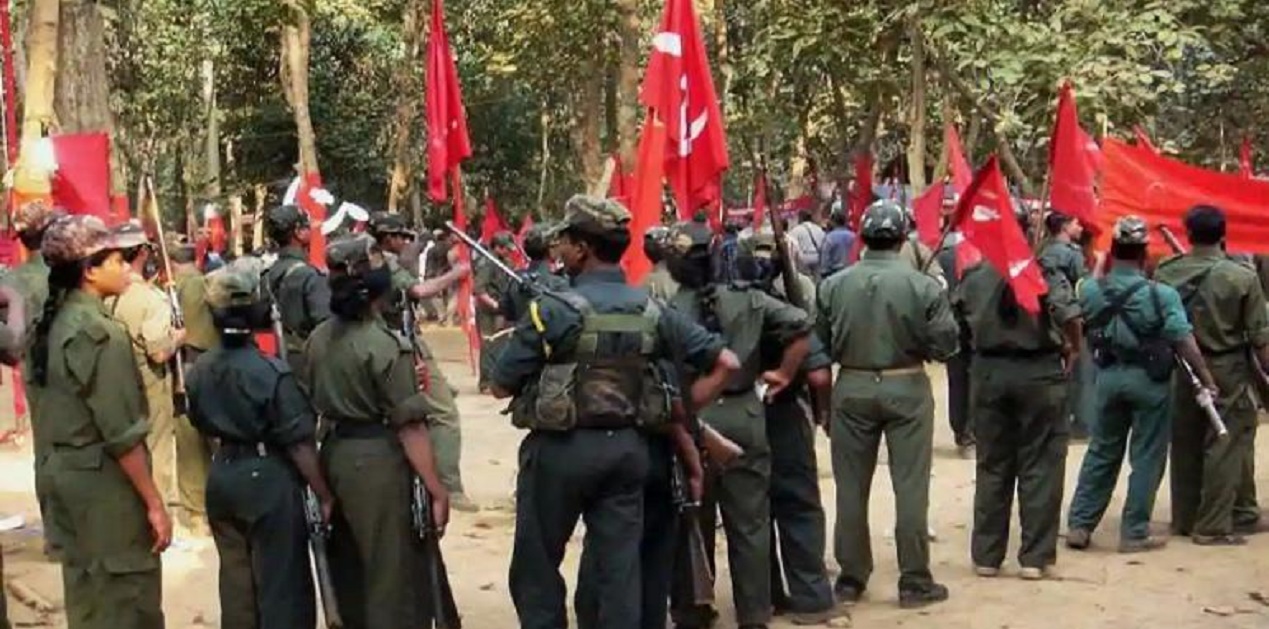


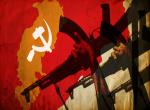
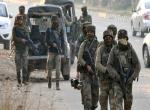
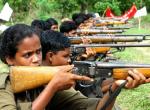
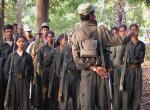

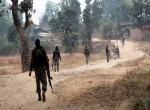
Post new comment